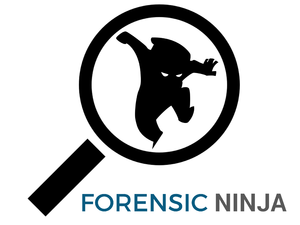Difference between revisions of "Forensic Ninja"
| Line 35: | Line 35: | ||
==<div style="background: #ffffff; padding: 17px; line-height: 0.1em; text-indent: 10px; font-size:17px; font-family: Helvetica; border-left:8px solid #0091b3"><font color= #000000><strong>Objectives</strong></font></div>== | ==<div style="background: #ffffff; padding: 17px; line-height: 0.1em; text-indent: 10px; font-size:17px; font-family: Helvetica; border-left:8px solid #0091b3"><font color= #000000><strong>Objectives</strong></font></div>== | ||
<div style="margin:0px; padding: 10px; background: #f2f4f4; font-family: Open Sans, Arial, sans-serif; border-radius: 7px; text-align:left"> | <div style="margin:0px; padding: 10px; background: #f2f4f4; font-family: Open Sans, Arial, sans-serif; border-radius: 7px; text-align:left"> | ||
| + | In this project, we seek to build an interactive visualisation application that helps users to analyse connectivity and frequently discussed topics among employees of an organisation. This allows users to better visualise the organisation structure and interactivity among the employees that might suggest potential wrongdoings. <br /> | ||
| + | |||
| + | |||
| + | By using GAStech organisation email exchanges as a case study, the application aims to help users the following: | ||
| + | Understand GAStech organisational structure | ||
| + | Analyse frequently discussed topics among GAStech employees | ||
</div> | </div> | ||
Revision as of 12:48, 7 October 2016
Contents
Problem and Motivation
Benford’s Law has been widely used by forensic data analysts to detect anomalies or possible fraudulent activities in an organisation. However, in the world of information, majority of the data are textual fields. For example, in an accounts payable, 70% of the data are textual data whereas only 10% of the data are numerical fields (Lanza, 2016).
Furthermore, fraudsters tend to work in groups rather than relying on their own. In 2015, 62 percent of fraudsters colluded with others(KPMG International, 2016). As 74 percent of the fraud is perpetrated by internal staff or a collusion between internal staff and external parties (KPMG International, 2016), this highlights the need for complex tools for fraud examiners to not only analyse available textual data of the firm but also visualise the interactivity among employees of an organisation.
As email is one of the preferred modes of business communication in an organisation, analysing emails can help to uncover any potential red flags in the organisation structure or culture. By using GAStech organisation email exchanges as a case study, we seek to analyse the connectivity and frequently discussed topics among employees of an organisation.
Objectives
In this project, we seek to build an interactive visualisation application that helps users to analyse connectivity and frequently discussed topics among employees of an organisation. This allows users to better visualise the organisation structure and interactivity among the employees that might suggest potential wrongdoings.
By using GAStech organisation email exchanges as a case study, the application aims to help users the following:
Understand GAStech organisational structure
Analyse frequently discussed topics among GAStech employees
Data Source
References to Related Work
Storyboard
Key Technical Challenges
Project Schedule
References
Our Team
Group 13
1. Lim Hui Ting
2. Jonathan Eduard Chua Lim
